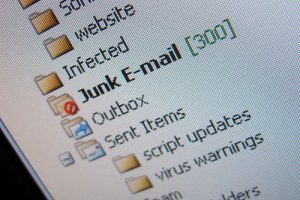Just before the weekend, we became aware of a particularly intrusive and persistent phishing attack. An e-mail, seemingly from Standard Bank, was distributed from a staff member’s e-mail account after being hacked.
In order to prevent the attack from causing more damage to other e-mail users, stricter spam filter measures had to be implemented over the weekend. After this time period, the filter was reset to its default.
These measures caused some e-mails that weren’t spam, to divert to Outlook’s Junk Mail folder. They were not deleted, but they weren’t visible in inboxes.
Even though it is advisable that you occasionally check your Junk mail folder, it seems some staff aren’t familiar with the folder or it’s function.
The Microsoft Outlook Junk E-mail Filter helps reduce unwanted email messages in your Inbox. Junk e-mail, also known as spam, is moved by the filter away to the Junk E-mail folder.
 How the Junk E-mail filter works
How the Junk E-mail filter works
The Junk E-mail Filter evaluates each incoming message to assess whether it might be spam, based on several factors. These can include the time when the message was sent and the content of the message. By default, the Junk E-mail Filter is turned on and the protection level is set to Low. This level catches only the most obvious spam. You can make the filter more aggressive by changing the level of protection that it provides.
You can adjust the Junk E-mail Filter settings in the Junk E-mail Options dialogue box.
-
On the Home tab, in the Delete group, click Junk, and then click Junk E-mail Options.
Any message that is suspected to be junk is moved to the Junk E-mail folder. We recommend that you periodically review the messages in the Junk E-mail folder to check for legitimate messages that were incorrectly classified as junk. If you find a message that isn’t junk, drag them back to the Inbox or to any folder. You can also mark the item as not junk by doing the following:
-
On the Home tab, in the Delete group, click Junk, and then click Not Junk.
More detailed instructions can be found on the Office365 Knowledgebase and on Microsoft’s website.
We apologise for the inconvenience and confusion caused by these emergency measures. If you have any questions, please contact the IT Service Desk at 021 808 4367 or help@sun.ac.za.

